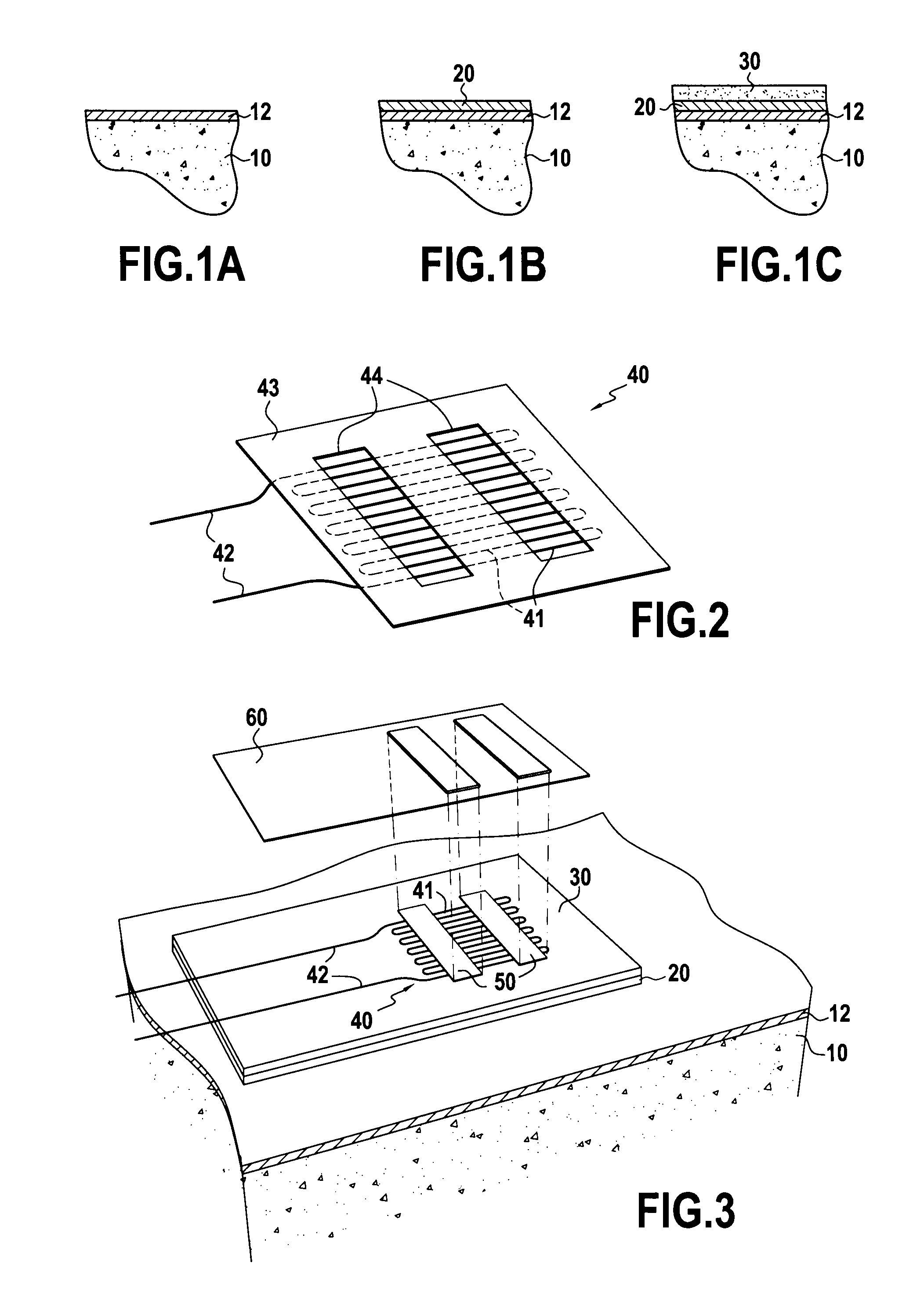Method of making an alumina deposit on a substrate covered in sic
a technology of alumina deposits and sic, which is applied in the direction of piezoelectric/electrostrictive transducers, transducer types, mechanical means, etc., can solve the problems of main failure mode, damage to the sic surface without creating favorable roughness, etc., to achieve better adhesion, minimize mechanical stress, and improve physicochemical affinity
- Summary
- Abstract
- Description
- Claims
- Application Information
AI Technical Summary
Benefits of technology
Problems solved by technology
Method used
Image
Examples
Embodiment Construction
[0029]FIG. 1A shows a part for use in very high temperature applications, having a substrate 10 that is covered in a layer 12 of silicon carbide (SiC). By way of example, the substrate 10 is made of a ceramic matrix composite material, or of a self-healing ceramic matrix composite material. The composite material may be SiC or it may be formed by a plurality of refractory ceramic layers that are precursors of glass in the silicon boron carbon (Si—B—C) ternary system. Such composites are reinforced, for example, by fibers made of carbon or ceramic. In applications to aviation turbomachines, such parts are typically thin parts, of frustoconical or plane rectangular shape, and they present a size of the order of a few hundreds of millimeters.
[0030]The SiC layer 12 deposited on the substrate is deposited, for example, by the technique known as chemical vapor deposition.
[0031]FIG. 1B shows the same part in which the SiC layer 12 is covered in a silicon adhesion underlayer 20 deposited on...
PUM
| Property | Measurement | Unit |
|---|---|---|
| thickness | aaaaa | aaaaa |
| temperatures | aaaaa | aaaaa |
| grain size | aaaaa | aaaaa |
Abstract
Description
Claims
Application Information
 Login to View More
Login to View More - R&D
- Intellectual Property
- Life Sciences
- Materials
- Tech Scout
- Unparalleled Data Quality
- Higher Quality Content
- 60% Fewer Hallucinations
Browse by: Latest US Patents, China's latest patents, Technical Efficacy Thesaurus, Application Domain, Technology Topic, Popular Technical Reports.
© 2025 PatSnap. All rights reserved.Legal|Privacy policy|Modern Slavery Act Transparency Statement|Sitemap|About US| Contact US: help@patsnap.com


